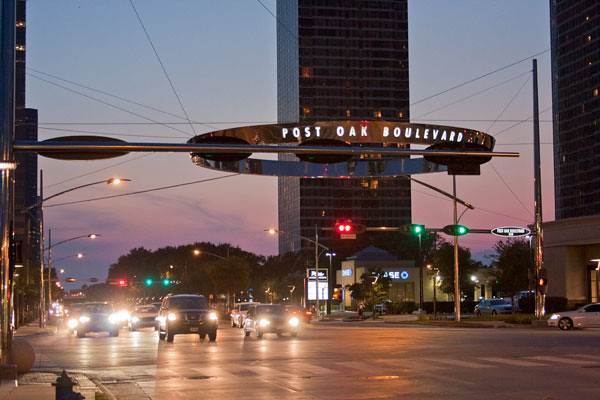
Metro signs in Paris, piazzas in Rome, outdoor urinals in Amsterdam.
What they all have in common is that they are all visual cues that let you know that you arrived somewhere unique. What they also have in common is that they belong in old cities that developed their personalities over centuries or millennia.
Houston, founded in 1836, is a young city. Uptown Houston is newer still. In 1948, the area known today as Uptown Houston was nearly three miles outside Houston city limits. The thoroughfares in the area were described by a local reporter as a “lonely, unlit, pockmarked booby trap for nocturnal animals and boozed up motorists.”
A personality had to be created for this rapidly developing area.
The polished, glamorous and futuristic sign system of Uptown Houston successfully creates a sense of place. It celebrates the newness instead of mimicking an old look.
(Continued below)
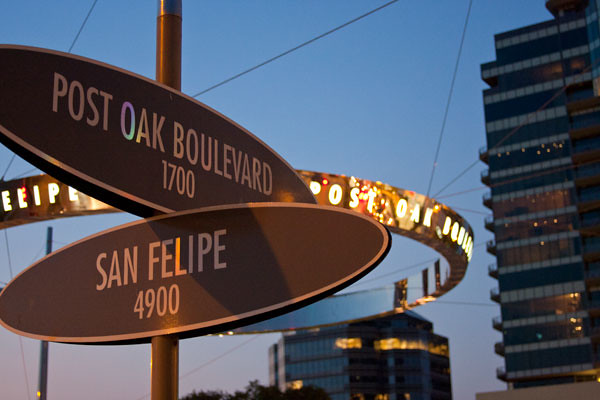


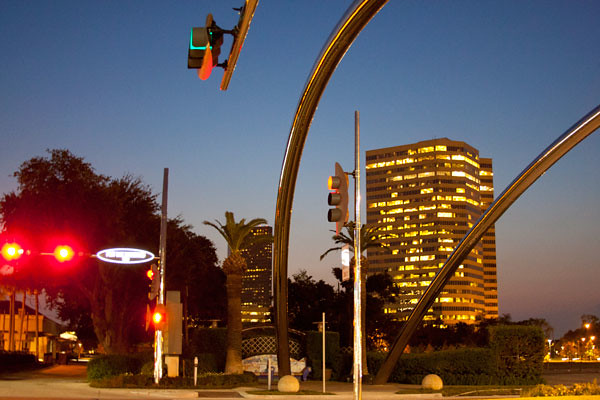

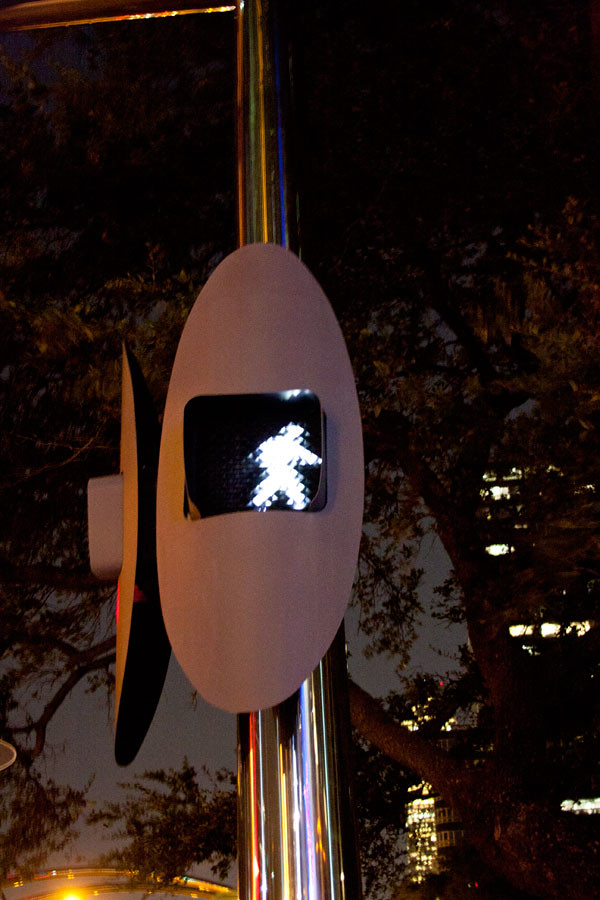
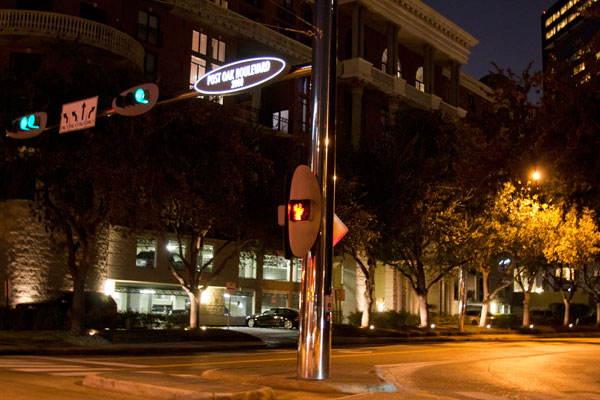
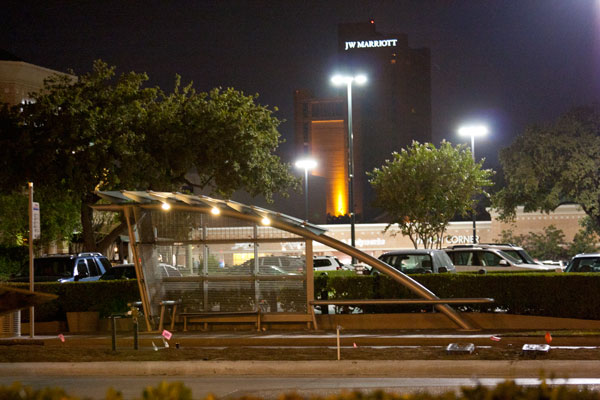
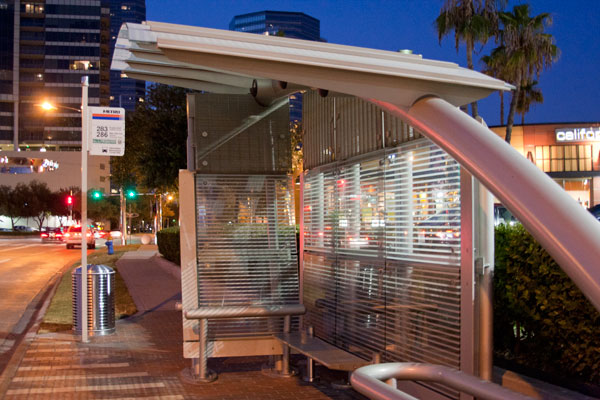
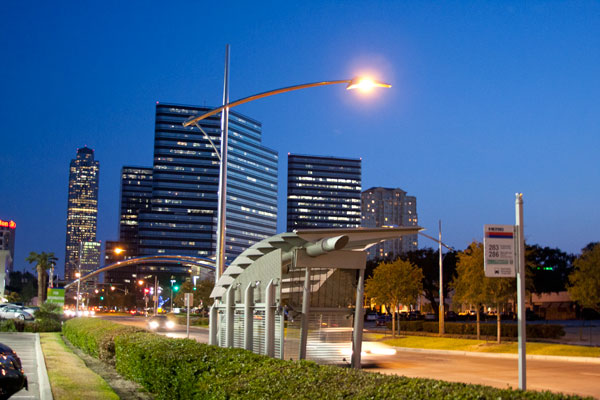
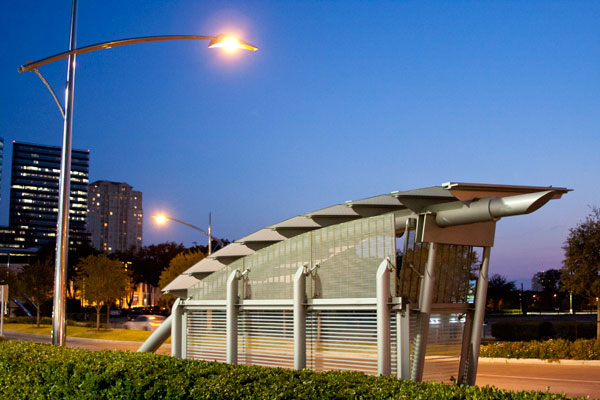
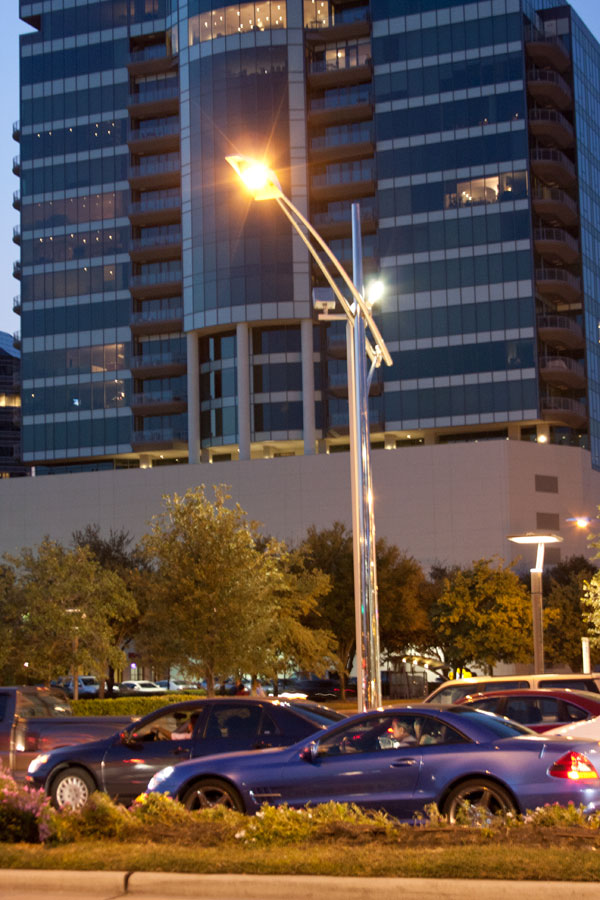
Communication Arts (now a part of Stantec), a design firm in Boulder, Colorado designed the signage. They wrote the following about this work:
The objective of the Houston Uptown Streetscape Program was to enhance the public realm, create a sense of place, and celebrate the uniqueness of the Houston Uptown District while creating viable amenities for the pedestrian. The project is funded by the Harris County Improvement District No. 1, a self-taxing agency created to implement public improvements within this 300-block area of Houston.
Distributed throughout the District are: Six pairs of 135’-wide stainless steel arches, six 40’-diameter street signs, custom streetlights, custom traffic signals, street signs, pedestrian parks with landscaping, hardscape, and a public art “interpretive” program.
Much of the Houston Uptown streetscape program is executed in polished stainless steel. The use of this material and the design of the various components was inspired by the technology and infrastructure developed to harvest and transport oil and natural gas through Texas. The studio created the aesthetic of stainless steel pipes and valves that uniquely define the area.
Each streetscape element addresses a different scale issue: the arches celebrate the automobile entry into the District while focusing pedestrian activities in a zone near the base. The sign rings mark the boundaries of the District. The streetlights and signalization provide the density of elements necessary to make the district coherent.
A series of “oasis” or pocket parks complement the stainless steel program with more conventional pedestrian seating and landscaping. Each oasis has an art feature that takes the “serious” edge off of the stainless steel program and integrates the public art program in the district. This is an interpretive program that illustrates the history and culture of Houston through references to such things as the importance of the space program to Houston, the agrarian history of the Post Oak district, and of course, the tall tales of Texas.
CommArts design involvement in this District started in the early 1990’s and continues today.